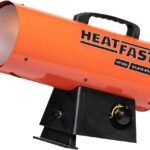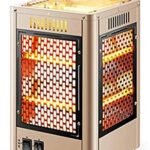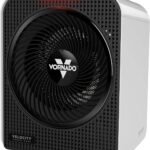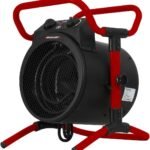Imagine the luxury of having endless hot water supply, instantly, without the hefty storage tank. Switching to a tankless water heater is not only energy-efficient but also saves precious space in your house. But you may be wondering where is the ideal spot to install this handy appliance. This article navigates through all the potential places to install a tankless water heater in your home, guiding you to make the most out of its benefits. Let’s embark on this journey together to find the perfect location for your tankless water heater.
Understanding Tankless Water Heaters
Tankless water heaters have increasingly become popular in many households due to their immense benefits. Before delving into their installation positions, it’s crucial to understand what they are and how they function.
Definition of Tankless Water Heaters
Simply put, tankless water heaters, also known as demand-type or instantaneous water heaters, provide hot water only when needed. Unlike traditional storage tank water heaters that continuously heat stored water, tankless water heaters heat water directly without any storage, hence their name.
Benefits of Tankless Water Heaters
Switching to a tankless water heater comes with many benefits. These devices save energy because they heat the water directly without the need for a storage tank. This considerably reduces standby energy losses associated with traditional water heaters, ultimately leading to lower energy bills. Additionally, they provide a constant supply of hot water, add value to your home, and occupy less space due to their compact size.
Different Types of Tankless Water Heaters
There are mainly two types of tankless water heaters- electric and gas-fired. Electric ones are generally smaller and less expensive but might require a considerable amount of power to function optimally. On the other hand, gas-fired units are more powerful but also more costly and possibly challenging to install.
How Tankless Water Heaters Work
When you turn on the hot water tap, cold water travels through a pipe into the unit. Depending on whether it’s an electric or gas unit, an electric element or gas burner heats the water. This way, tankless water heaters deliver a constant supply of hot water. You don’t need to wait for a storage tank to fill up with enough hot water.
Identifying Suitable Locations for Tankless Water Heaters
Finding the perfect spot for your tankless water heater is crucial. Installing it at the right place ensures optimal operation and accessibility for future maintenance.
Assessing the Space Availability
Your available space significantly influences where to install the water heater. Considering tankless water heaters come in different sizes, the space in question should be adequate.
Considering Access to Water and Gas Lines
For optimal operation, the heater should be near water and gas lines. This makes the installation process more straightforward and cuts down unnecessary piping.
Importance of Ventilation
Installation rooms need proper ventilation, especially for gas-fired tankless heaters. This ensures safe exhaust of combustion gases and a healthy supply of combustion air.
Need for Easy Access for Servicing
Remember to install the unit in an easily-accessible location for smooth servicing or repairs in the future.
Indoor Installation of Tankless Water Heaters
There are various places you can install your tankless water heater indoors. Here are some of these.
Installing in the Bathrooms
Installing the heater in the bathroom keeps it closer to the point of use, leading to a faster hot water supply and reducing heat loss due to piping.
Installing in the Basement
Basements make an excellent spot for tankless water heater installation. They offer enough space, and the heater stays out of sight.
Installation in Utility Rooms
Due to their ample space and proximity to gas and water lines, utility rooms are also a top choice.
Installation in the Kitchen
Installing the water heater in the kitchen is beneficial for homes with high hot water demand in the area. It increases efficiency and accessibility, especially for under-sink installations.
Tips for Indoor Installation
Ensure proper ventilation, especially for gas units. If possible, place the heater near gas and water lines for easy installation.
Outdoor Installation of the Tankless Water Heaters
Outdoor installations come with their advantages and considerations. Let’s look at these.
Pros and Cons of Outdoor Installation
Outdoor installations don’t require venting, and the units are designed to withstand varying weather conditions. However, extreme weather or local fauna may potentially damage the device.
Dealing with Weather Conditions
Many modern outdoor unit models come weather-proof. However, given extremely low temperatures, it is advisable to use an anti-freeze kit to prevent the unit from freezing.
Safety Considerations for Outdoor Installation
Despite their weather-resistance, it’s essential to protect outdoor units from debris, animals, or even vandalism. A good enclosure will help with this.
Protecting the Heater from Elements
Pay attention to your locality’s weather patterns. It’s paramount to protect heaters from harsh climatic conditions and other harmful external elements to ensure longevity.
Installation in Multi-Floor Buildings
Whether it’s a multistoried residence or commercial building, specific considerations should be observed during installation.
Importance of Central Location for Multi-Floor Installation
Centrally locating your water heater reduces heat losses during transportation. The shorter the hot water has to travel, the better.
Considering the Distance to the Farthest Water Appliance
Longer distances mean more waiting and higher heat losses. Try to minimize the distance to the farthest water appliance as much as possible.
Multi-Unit Installation Practices
Installing multiple smaller units across the building is an alternative to installing one central unit. This can enhance efficiency by reducing heat losses and waiting time.
Installation in Small Spaces
Limited space shouldn’t limit you from enjoying the services of a tankless water heater.
Ideal Solutions for Small Spaces
Compact and wall-mounted tankless water heaters suit small spaces perfectly.
Wall-mounted Tankless Water Heaters
Wall-mounted units free up your valuable floor space and are easy to access. They are ideal for small apartments or for installation in cramped utility rooms or closets.
Compact Models for Limited Space
Compact models, on the other hand, don’t take up much space but still provide a continuous supply of hot water.
Avoiding Overheating in Small Spaces
Even in a small space, ensure there is enough air for combustion and cooling. While wall-mounted units save on space, they need a favorable environment to avoid overheating or succumbing to heat-related damages.
Commercial Installation of Tankless Water Heaters
Commercial tankless heaters’ installation may vary from domestic ones due to differences in demand and use.
Commercial Vs Domestic Installation Differences
Commercial installations require more robust and reliable units due to higher demand and continuous use. The water heaters might also be bigger, requiring more space and complex installation.
Popular Commercial Locations for Installation
In commercial setups, the heaters can be installed in boiler rooms, basements, or rooftops. It all depends on the building design and hot water requirements.
Understanding Commercial Water Demand
The demand for hot water in commercial settings varies significantly across different industries. As such, it is essential to understand your demand to choose the right size and type of heater.
Installation Regulations and Safety
Installing tankless water heaters should comply with specific guidelines.
Understanding Local Installation Codes
Knowledge about local codes is vital as regulations differ with location. Some areas might have guidelines about venting, location, or even the type and size of the units allowed.
Importance of Hiring Licensed Professionals
While it might seem like an expensive option, hiring professionals to install your water heater is worth it. Their experience and expertise ensure your heater operates safely and efficiently.
Safety Precautions to Take While Installation
Common safety precautions include wearing gloves to prevent cuts, safety glasses for eye protection, and making sure the power supply is off before starting the installation.
Maintenance Considerations Post-Installation
Post-installation maintenance is an integral part of owning a tankless water heater.
Routine Maintenance After Installation
Regular maintenance will largely contribute to the unit’s lifespan and efficiency. For instance, regular descaling is necessary, particularly for those living in areas with hard water.
Importance of Easy Access for Maintenance
Incidentally, you’ll need to service your tankless water heater occasionally. Install your unit in a place that will facilitate easy access.
Most Common Maintenance Tasks
Common maintenance tasks include system flushing and cleaning, checking for leaks, and inspecting venting systems.
Cost Factors in Tankless Water Heaters Installation
Installation costs vary with the type of heater, location, and whether you need new pipings or modifications.
Understanding Installation Costs
Installation costs are on top of the unit’s purchasing price. The total cost includes heater cost, labor, and any required modification costs.
Additional Costs: Material and Labor
Materials involve pipings and mounts, and valves, while labor charges vary depending on the complexity. In some cases, there might be costs associated with removing your old heater.
Energy Efficiency Savings Over Time
While the upfront costs can seem high, a tankless unit can give substantial savings over time, thanks to its energy efficiency. Therefore, it’s not only eco-friendly but also friendly to your pockets in the long run.









